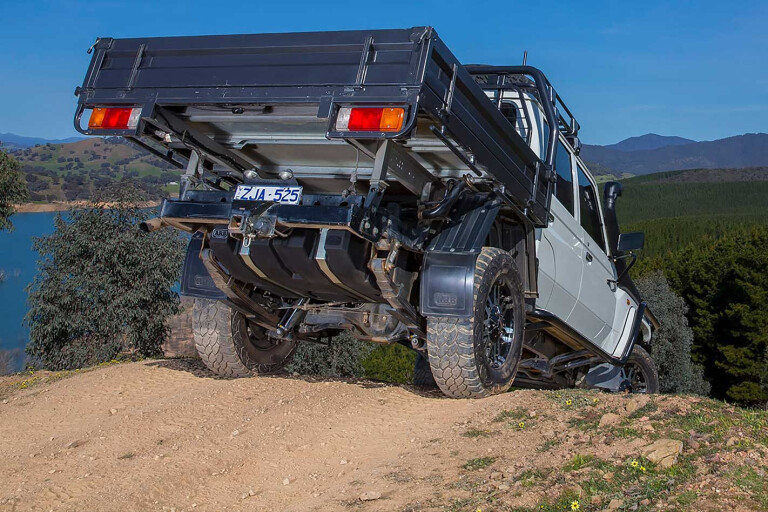
A factory-fitted fuel tank has the potential to leave you high and dry on your next cross-country expedition.
The restricted capacity of some OE tanks – on average sitting at around the 80-litre mark – will only get you so far before a top-up is required, but topping up gets harder the farther you are from civilisation, where fuel bowsers become rarer than hen’s teeth. Adding an auxiliary fuel tank, or replacing the factory tank with a long-range option, is a non-negotiable for a remote-area travel; but there are many other advantages to fitting an aftermarket tank.
 To dig a bit deeper, we spoke to three of the biggest players on the Australian scene: ARB’s Mark Berger, Brown Davis’s Cam Brown, and Out of Town 4WD’s Ric Black (they’re the gurus who produce the Long Ranger fuel tanks).
To dig a bit deeper, we spoke to three of the biggest players on the Australian scene: ARB’s Mark Berger, Brown Davis’s Cam Brown, and Out of Town 4WD’s Ric Black (they’re the gurus who produce the Long Ranger fuel tanks).
AUXILIARY OR REPLACEMENT TANKS
There are two types of aftermarket fuel tanks we’ll be taking a closer look at: auxiliary (or back-up) tanks, and long-range replacement tanks.
An auxiliary fuel tank works in tandem with the primary tank to provide additional fuel on top of the standard tank – should the user be pointing their fourbie to the centre of Australia or the northern tip of FNQ. Often the tanks are usually connected and the driver can be kept aware as to how depleted the respective tanks are. The driver can then switch between tanks via the flick of an in-cabin switch.
However, not all aftermarket fuel tanks are for auxiliary or back-up purposes. ARB’s Frontier Tank, for example, is a replacement long-range tank for OE equipment. The Frontier Tank, which ARB has manufactured for about two years at its Adelaide facility, is independently designed for specific vehicle applications, as tank volume, weight and weight distribution will vary from model to model.
“Volume can range from 112 litres up to 180 litres for a full replacement tank,” Mark Berger, ARB’s brand marketing manager, added. It’s this increased capacity which is a major selling point, with customers wanting more travel with less fuel stops – often unavoidable on a big, remote-area trip. “Dependent on vehicle and tank size, some makes and model achieve almost double the fuel capacity with the addition of a Frontier fuel tank,” Berger said.
 Cam Brown said the same applies to Brown Davis’s extensive range of tanks: “On the current range of 4WD ute replacement long-range fuel tanks we try to double the vehicle’s fuel capacity. For example, on the current model Hilux we swap out the 75-litre standard tank and replace it with our 150-litre tank, which doubles the vehicle’s driving range.”
Cam Brown said the same applies to Brown Davis’s extensive range of tanks: “On the current range of 4WD ute replacement long-range fuel tanks we try to double the vehicle’s fuel capacity. For example, on the current model Hilux we swap out the 75-litre standard tank and replace it with our 150-litre tank, which doubles the vehicle’s driving range.”
As no two vehicle makes are alike, OOT 4WD’s production manager Ric Black explained that some require an auxiliary tank and some can utilise a replacement tank. “For example, a Suzuki Sierra has a standard 40-litre tank and we can only fit an extra 30-litre tank under such a small car,” he said.
A 150L LRA auxiliary fuel tank would be able to take a supercharged V8 Nissan Patrol’s total capacity up to 290 litres, giving it a range of more than 1000km between drinks.
Ric told us the most popular range for fitment of the Long Ranger is the current model Hilux.
“Our biggest replacement fuel tank for this model has a capacity of 182 litres, providing a massive improvement of 102 litres. This has the potential for an extra 1300km range – that’s a huge detour you can now make.”
 But a long-range tank isn’t solely for people looking to get to the most remote regions of this massive country, as Brown Davis’s Cam Brown told us: “We also find a lot of people want to fill up when they know the fuel is top quality. With the extra range [of a long-range fuel tank] it gives you the luxury to pick your fill-up locations.”
But a long-range tank isn’t solely for people looking to get to the most remote regions of this massive country, as Brown Davis’s Cam Brown told us: “We also find a lot of people want to fill up when they know the fuel is top quality. With the extra range [of a long-range fuel tank] it gives you the luxury to pick your fill-up locations.”
It’s a great long-term coin-saving technique, with money saved in the long run every time you fill the tank to the brim when fuel prices are at their cheapest – makes good sense.
BUILT TOUGH
Quality-made aftermarket fuel tanks are also built tough, meaning they’ll be remarkably reliable. To ensure maximum strength and durability, “all Brown Davis long-range fuel tanks are constructed from 2mm aluminium coated cold rolled steel,” said Cam Brown. “This gauge of steel is sufficiently resistant to impact damage so that additional tank guards are not necessary.
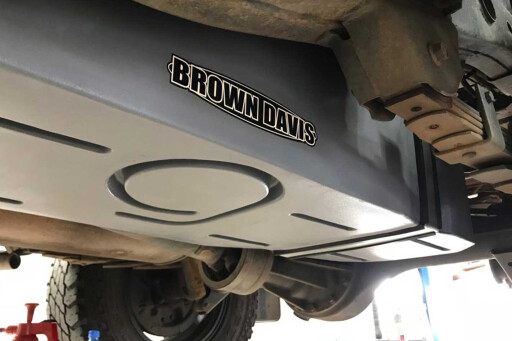 “The aluminium coating on the specific steel used by Brown Davis offers the best of both worlds, with the strength of steel and the anti-corrosion properties of aluminium. The 2mm aluminised steel with internal baffles has proven itself over the past 30-plus years.”
“The aluminium coating on the specific steel used by Brown Davis offers the best of both worlds, with the strength of steel and the anti-corrosion properties of aluminium. The 2mm aluminised steel with internal baffles has proven itself over the past 30-plus years.”
ARB’s Frontier tank, on the other hand, is manufactured using crosslink polymer. “The plastic is amazingly strong,” Mark Berger said, “having impact, UV, chemical and fire resistance. ARB Frontier tanks are the first and only polymer tanks on the market and are borderline indestructible.
“The strong crosslink-polymer made up with a 7-9mm-thick wall makes the Frontier one of the strongest tanks on the market.”
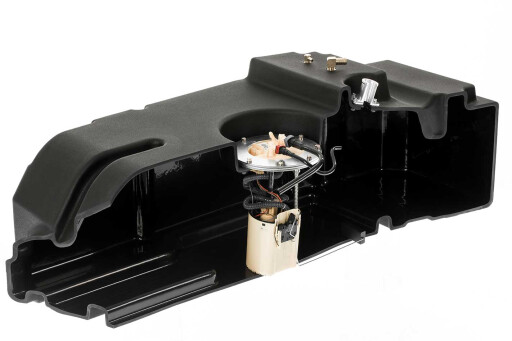 Ric Black explained that the material of choice for the Long Ranger is aluminised steel, which is sourced from mills in Asia as it’s a specialty steel not made locally.
Ric Black explained that the material of choice for the Long Ranger is aluminised steel, which is sourced from mills in Asia as it’s a specialty steel not made locally.
“This is basically cold rolled steel with a thin coating of aluminium added during manufacture for excellent corrosion resistance,” Ric told us. “Being made of 2mm aluminised steel the strength is unmatched, with design features such as integrated baffles and padded brackets to make sure it can handle whatever you throw at it, or, in most cases, what you land on."
GROUND CLEARANCE
In addition to the strong, robust construction, the units often take into account ground clearance and are designed to suit. For example, OOT 4WD offers hi-capacity and hi-clearance versions of its Long Ranger.
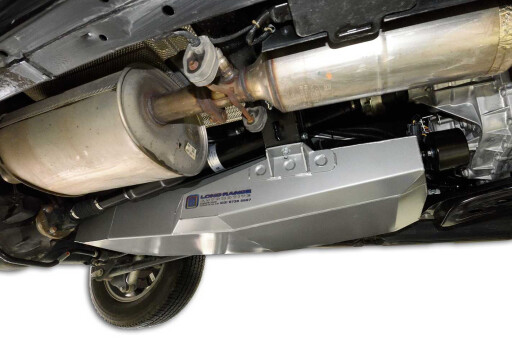 “The hi-capacity is the biggest tank we can get under there and still remains reasonable off-road; this is great for the outback tourer,” Ric said. “Then, for most popular makes, we have our unique hi-clearance designs; these are great and, in most cases, give the more adventurous off-roader a greater range and more clearance than the genuine fuel tank.”
“The hi-capacity is the biggest tank we can get under there and still remains reasonable off-road; this is great for the outback tourer,” Ric said. “Then, for most popular makes, we have our unique hi-clearance designs; these are great and, in most cases, give the more adventurous off-roader a greater range and more clearance than the genuine fuel tank.”
GO WITH THE PROS
For such an important job – which could prove to be a lifesaver on a remote-area adventure – it’s essential to get a quality-made product from those in the know.
Brown Davis, for example, has been producing fuel tanks since the early 1980s, but the idea originated in the mid-70s when David Brown (director) and Rod Stephens Racing created a lightweight aluminium fuel tank to give their Holden Torana the extra laps they needed around Mount Panorama.
This lead to a close friend wanting this same principle applied to his 40 Series Land Cruiser to get him to the tip of Cape York, and suddenly Brown Davis long-range fuel tanks were born. Cam Brown put it eloquently when he said: “In 2018 we will celebrate 40 years in business. When you buy a fuel tank or any product from a company that has been manufacturing for this long you know they must be doing something right.”
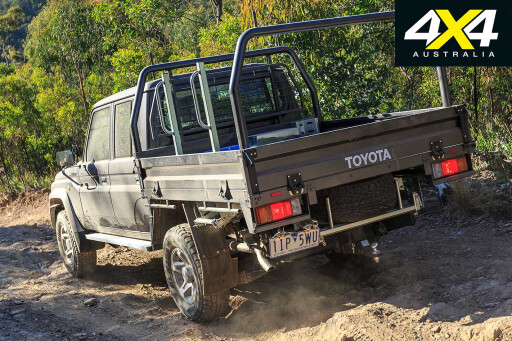 With more than 250 different tanks in the Brown Davis catalogue to choose from, there are small 50-litre auxiliary tanks for Jeep Wranglers and Defender 90 Series up to 210-litre replacement tanks for Mercedes Sprinter vans.
With more than 250 different tanks in the Brown Davis catalogue to choose from, there are small 50-litre auxiliary tanks for Jeep Wranglers and Defender 90 Series up to 210-litre replacement tanks for Mercedes Sprinter vans.
Likewise, manufacture of The Long Ranger began in the 1970s – “let’s just say we still have the original drawings in inches”, Ric Black added – and by 1980 sales began to skyrocket. It’s this experience which is why it’s advisable to stick with the trusted brands.
“When you make a decision to buy something cheap you often have the rationale that it’s not that important or you don’t use it that much, but every time you turn the key and start your vehicle you want your fuel tank to work; it’s not a purchase you should gamble with and hope for good luck with it,” Ric said.

INSTALLATION
Across the board, professional installation of replacement tanks – traditionally mounted underneath the vehicle, between the axles – is relatively straight-forward and usually takes about two to three hours. However, the installation of auxiliary tanks is a longer process, usually taking up to five hours. “An auxiliary tank is more involved as all the new fillers, gauges and transfer pump need to be installed,” Ric Black said. Cam Brown agreed: “Auxiliary fuel tanks require some wiring for secondary fuel gauges, along with plumbing for fitment.”
 All the experts agreed that DIY fitment of replacement tanks is easily achievable with the right tools (and available access to a hoist), but fitment of auxiliary tanks requires a lot more mechanical knowledge and should ideally be left to the experts to do.
All the experts agreed that DIY fitment of replacement tanks is easily achievable with the right tools (and available access to a hoist), but fitment of auxiliary tanks requires a lot more mechanical knowledge and should ideally be left to the experts to do.
RRP & WARRANTY
ARB Frontier Tank
RRP: $1050-$1500 (approx.)
Warranty: Three-year
Brown Davis
RRP: $900-$1800 (replacement tanks $900-$1200) + fitting and freight (approx.)
Warranty: Three-year
The Long Ranger
RRP: $900-2000 ($1200 average approx.)
Warranty: Three-year
With Thanks
ARB
Phone: 1300 272 494
Website: www.arb.com.au
Brown Davis
Phone: (03) 9762 8722
Website: www.browndavis.com.au
IRONMAN 4X4
Phone: (03) 9532 1111
Website: www.ironman4x4.com
The Long Ranger
Phone: (02) 4953 3288
Website: www.thelongranger.com.au



COMMENTS